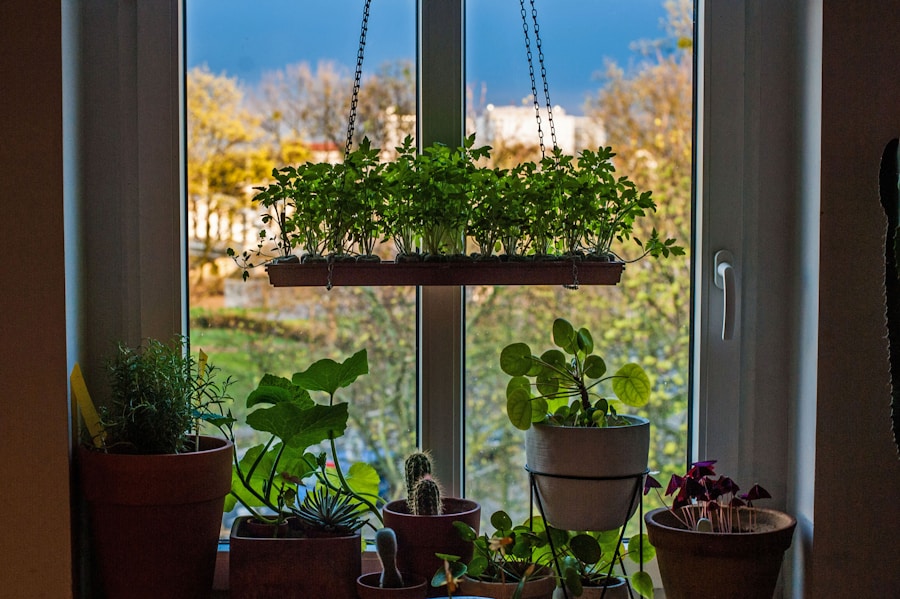Harvesting fresh produce is a crucial step in the journey from farm to table. It involves carefully picking fruits and vegetables at the peak of ripeness to ensure the best flavor and nutritional value. The timing of the harvest is essential, as fruits and vegetables continue to ripen after being picked. For example, tomatoes should be harvested when they are fully ripe, while other fruits like apples and pears should be picked slightly underripe to allow for further ripening during storage. Additionally, the method of harvesting can vary depending on the type of produce. Some fruits and vegetables, such as berries and delicate greens, require gentle handling to prevent bruising and damage, while others, like root vegetables, can withstand more rigorous harvesting techniques. Understanding the specific needs of each type of produce is essential for ensuring a successful harvest.
In addition to timing and technique, environmental factors also play a significant role in the harvesting process. Weather conditions, such as temperature and humidity, can impact the quality of the produce and the efficiency of the harvest. For example, extreme heat can cause fruits and vegetables to ripen too quickly, leading to a shorter shelf life, while excessive moisture can promote mold and spoilage. Farmers and growers must carefully monitor these factors to ensure that the harvest is conducted under optimal conditions. Overall, a thorough understanding of the harvesting process is essential for preserving the quality and freshness of fresh produce.
Tips for Properly Storing Fresh Produce
Proper storage is essential for maintaining the quality and freshness of fresh produce. After harvesting, fruits and vegetables should be stored in a cool, dark, and well-ventilated environment to slow down the ripening process and prevent spoilage. It is important to store different types of produce separately, as some fruits and vegetables release ethylene gas, which can cause others to ripen too quickly. For example, apples and bananas are known for producing high levels of ethylene gas and should be stored away from other fruits and vegetables. Additionally, certain fruits and vegetables, such as potatoes and onions, require specific storage conditions to prevent sprouting and spoilage. Potatoes should be stored in a cool, dark place with good air circulation, while onions should be kept in a dry, well-ventilated area.
Another important aspect of proper storage is the use of appropriate containers or packaging. For example, leafy greens should be stored in breathable bags or containers to prevent wilting, while delicate fruits like berries should be stored in shallow containers to prevent crushing. It is also important to regularly check stored produce for signs of spoilage and remove any damaged or overripe items to prevent the spread of mold and bacteria. By following these tips for properly storing fresh produce, consumers can extend the shelf life and preserve the quality of their fruits and vegetables.
Best Practices for Extending the Shelf Life of Fruits and Vegetables
Extending the shelf life of fruits and vegetables is essential for reducing food waste and maximizing the nutritional value of fresh produce. One of the best practices for extending shelf life is proper handling and preparation. For example, washing fruits and vegetables before storage can remove dirt and bacteria that can cause spoilage. However, it is important to thoroughly dry produce before storing it to prevent mold and rot. Additionally, removing any damaged or bruised areas can help prevent the spread of decay and extend the shelf life of fruits and vegetables.
Another best practice for extending shelf life is proper temperature control. Most fruits and vegetables should be stored at temperatures between 32-40°F (0-4°C) to slow down the ripening process and prevent spoilage. However, some produce, such as tropical fruits like bananas and pineapples, are sensitive to cold temperatures and should be stored at slightly higher temperatures. It is also important to avoid storing fruits and vegetables near sources of heat or direct sunlight, as this can cause them to ripen too quickly and spoil. By following these best practices for extending shelf life, consumers can enjoy fresh produce for longer periods and reduce food waste.
How to Preserve Fresh Produce Through Canning and Freezing
Canning and freezing are popular methods for preserving fresh produce and extending its shelf life. Canning involves heating fruits or vegetables in airtight jars or cans to kill bacteria and enzymes that can cause spoilage. This process allows produce to be stored at room temperature for extended periods without refrigeration. Canning is particularly well-suited for preserving high-acid foods like tomatoes, berries, and citrus fruits, as well as low-acid foods like green beans, carrots, and potatoes. Freezing is another effective method for preserving fresh produce. It involves quickly freezing fruits or vegetables at low temperatures to halt the ripening process and preserve their texture and flavor. Freezing is ideal for preserving a wide variety of produce, including berries, peaches, corn, peas, and leafy greens.
When preserving fresh produce through canning or freezing, it is important to follow proper techniques to ensure safety and quality. For canning, it is essential to use sterilized jars and lids to prevent contamination, as well as follow recommended processing times and methods for different types of produce. For freezing, it is important to blanch certain fruits and vegetables before freezing to preserve their color, texture, and nutritional value. Proper packaging is also crucial for both canning and freezing to prevent freezer burn or spoilage. By learning how to preserve fresh produce through canning and freezing, consumers can enjoy their favorite fruits and vegetables year-round while reducing food waste.
The Importance of Properly Handling and Packaging Fresh Produce
Proper handling and packaging are essential for maintaining the quality and safety of fresh produce throughout its journey from farm to table. From the moment fruits and vegetables are harvested, they must be handled with care to prevent bruising, damage, or contamination. This includes using appropriate tools and techniques for harvesting, such as sharp knives for cutting or picking delicate fruits by hand. After harvesting, it is important to handle produce gently during transportation and storage to prevent bruising or crushing. Proper packaging is also crucial for protecting fresh produce from damage or contamination. For example, packaging should provide adequate ventilation for certain types of produce, such as leafy greens or berries, to prevent wilting or mold growth.
In addition to maintaining quality, proper handling and packaging are also important for food safety. Contaminated or damaged produce can pose health risks if consumed, so it is essential to follow strict hygiene practices throughout the handling process. This includes washing hands before handling produce, using clean cutting boards and utensils, and regularly sanitizing storage containers or packaging materials. By understanding the importance of properly handling and packaging fresh produce, consumers can ensure that their fruits and vegetables are safe to eat and maintain their quality for longer periods.
Utilizing Root Cellars and Other Storage Methods
Root cellars have been used for centuries as a traditional method for storing fresh produce without refrigeration. These underground storage spaces provide cool, dark, and humid conditions that are ideal for preserving a wide variety of fruits and vegetables. Root cellars are particularly well-suited for storing root vegetables like potatoes, carrots, beets, and onions, as well as other crops like apples, pears, cabbage, and winter squash. In addition to root cellars, there are other storage methods that can be used to preserve fresh produce without refrigeration. For example, cool basements or garages can provide suitable conditions for storing certain types of produce during the fall and winter months.
Another alternative storage method is using insulated containers or boxes filled with sand or sawdust to create a makeshift root cellar environment. This method can be particularly useful for homeowners with limited space or those living in urban areas without access to traditional root cellars. Regardless of the storage method used, it is important to regularly monitor stored produce for signs of spoilage or decay and make adjustments as needed to maintain optimal conditions. By utilizing root cellars and other storage methods, consumers can extend the shelf life of their fresh produce without relying on refrigeration.
Sustainable and Eco-Friendly Ways to Store Fresh Produce
In addition to traditional storage methods, there are several sustainable and eco-friendly ways to store fresh produce that minimize energy consumption and reduce environmental impact. For example, using natural ventilation or passive cooling techniques can help maintain optimal storage conditions without relying on electricity or mechanical refrigeration. This can include utilizing shade or airflow from windows or vents to create a cool environment for storing fruits and vegetables. Another sustainable approach is using renewable energy sources like solar power to operate refrigeration systems or cooling devices for storing produce.
Furthermore, reducing food waste through proper storage practices is an eco-friendly way to minimize environmental impact. By extending the shelf life of fresh produce through proper handling, packaging, and storage methods, consumers can reduce the amount of food that ends up in landfills. Additionally, supporting local farmers who use sustainable growing practices can help reduce the carbon footprint associated with transporting produce long distances. By choosing locally grown fruits and vegetables that are in season, consumers can minimize energy consumption associated with transportation while supporting sustainable agriculture practices.
Overall, there are numerous sustainable and eco-friendly ways to store fresh produce that benefit both consumers and the environment. By incorporating these practices into their daily lives, individuals can reduce food waste, minimize energy consumption, and support sustainable agriculture while enjoying high-quality fruits and vegetables year-round.
In conclusion, understanding the harvesting process is essential for preserving the quality and freshness of fresh produce from farm to table. Properly storing fresh produce involves careful handling, appropriate packaging, temperature control, and regular monitoring for signs of spoilage. Best practices for extending shelf life include proper handling and preparation techniques as well as temperature control. Preserving fresh produce through canning and freezing allows consumers to enjoy their favorite fruits and vegetables year-round while reducing food waste. The importance of properly handling and packaging fresh produce cannot be overstated in maintaining quality and safety throughout its journey from farm to table.
Utilizing root cellars and other storage methods provides sustainable alternatives to refrigeration for preserving fresh produce without relying on electricity or mechanical cooling systems. Finally, there are numerous sustainable and eco-friendly ways to store fresh produce that benefit both consumers and the environment by minimizing energy consumption, reducing food waste, supporting local farmers who use sustainable growing practices while enjoying high-quality fruits and vegetables year-round.
By using root cellars, canning, pickling, fermenting, and drying, individuals can extend the shelf life of their produce and reduce their carbon footprint. These methods not only help to reduce food waste but also support a more sustainable food system by promoting local and seasonal eating. Additionally, by reducing the reliance on refrigeration, individuals can decrease their energy consumption and contribute to a healthier planet. Overall, embracing these traditional methods of food preservation can lead to a more sustainable and environmentally friendly way of living.



